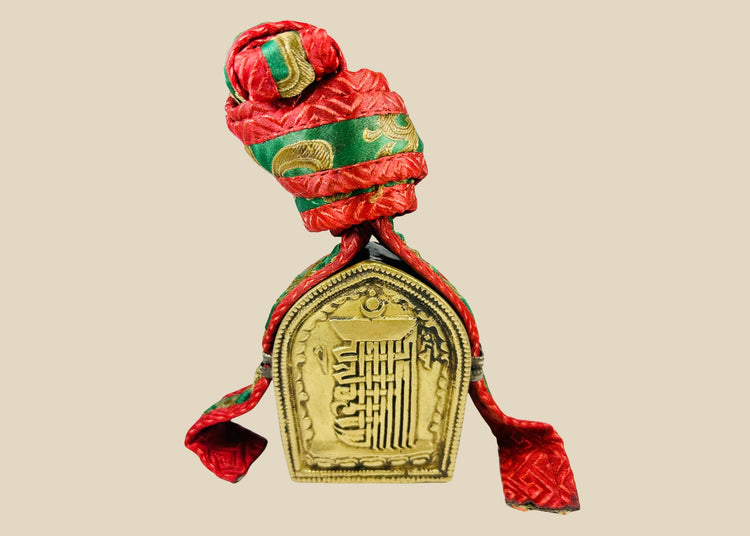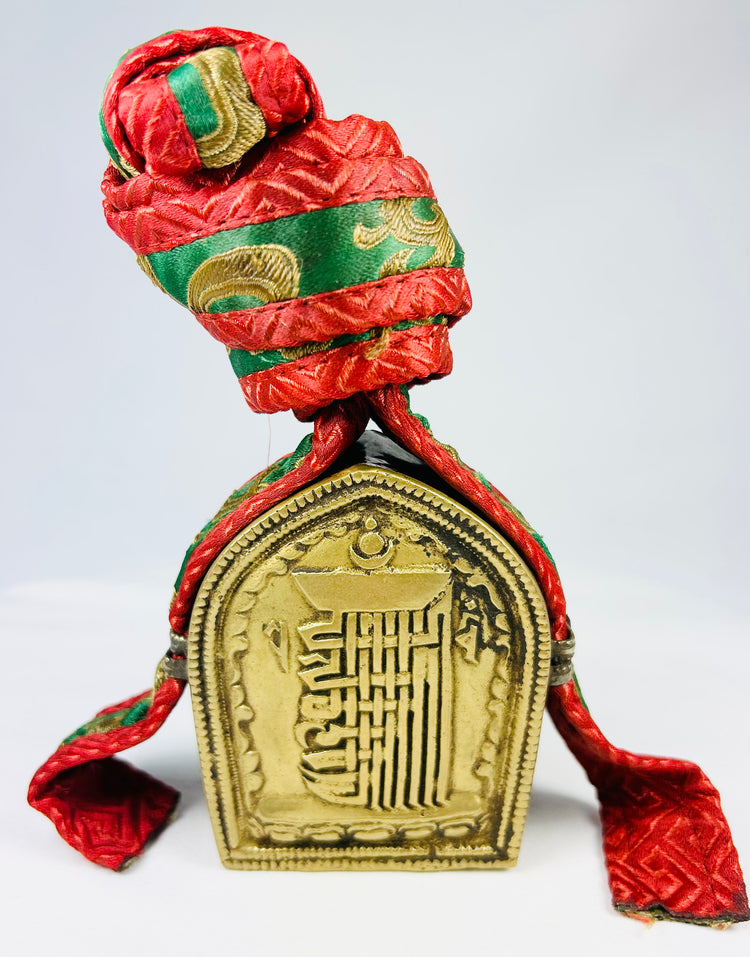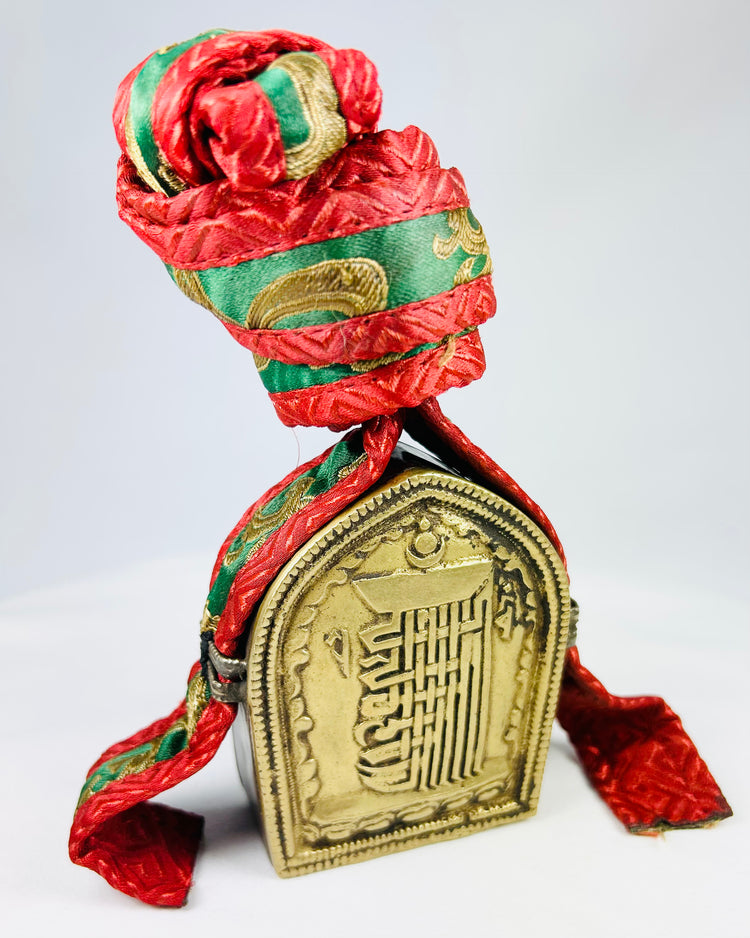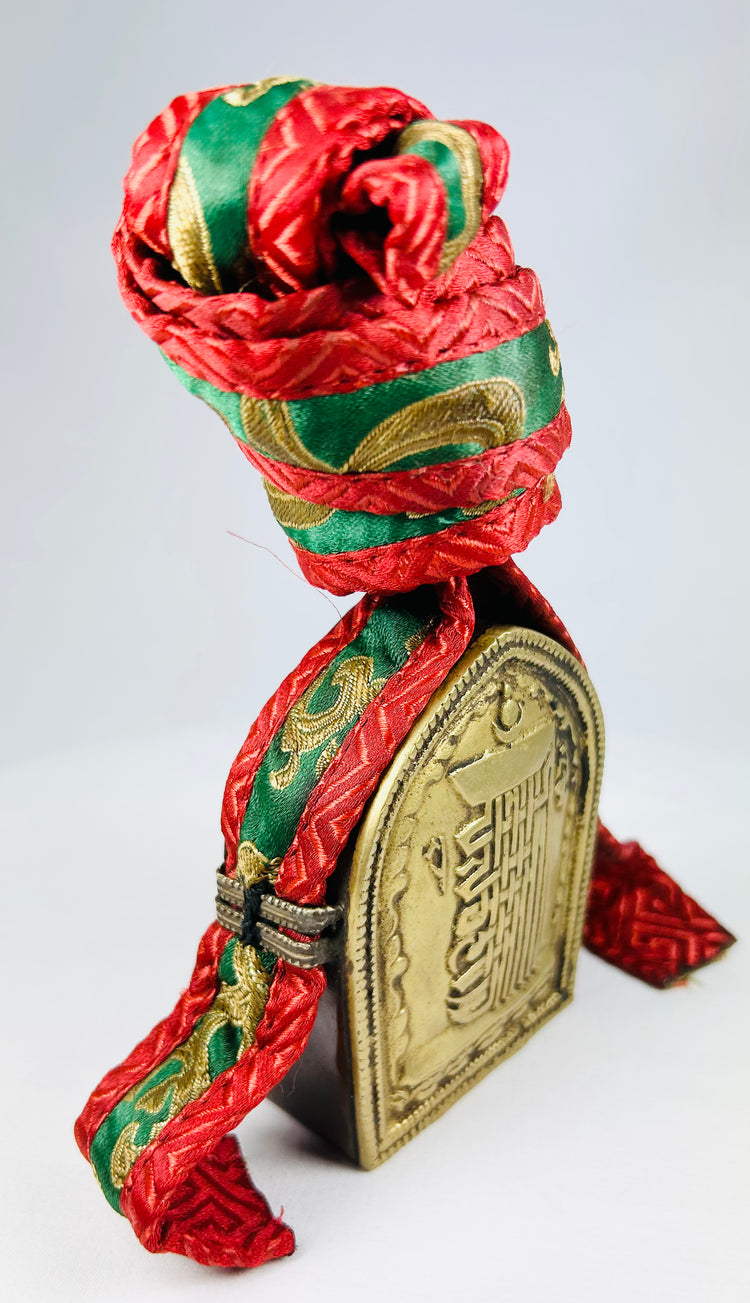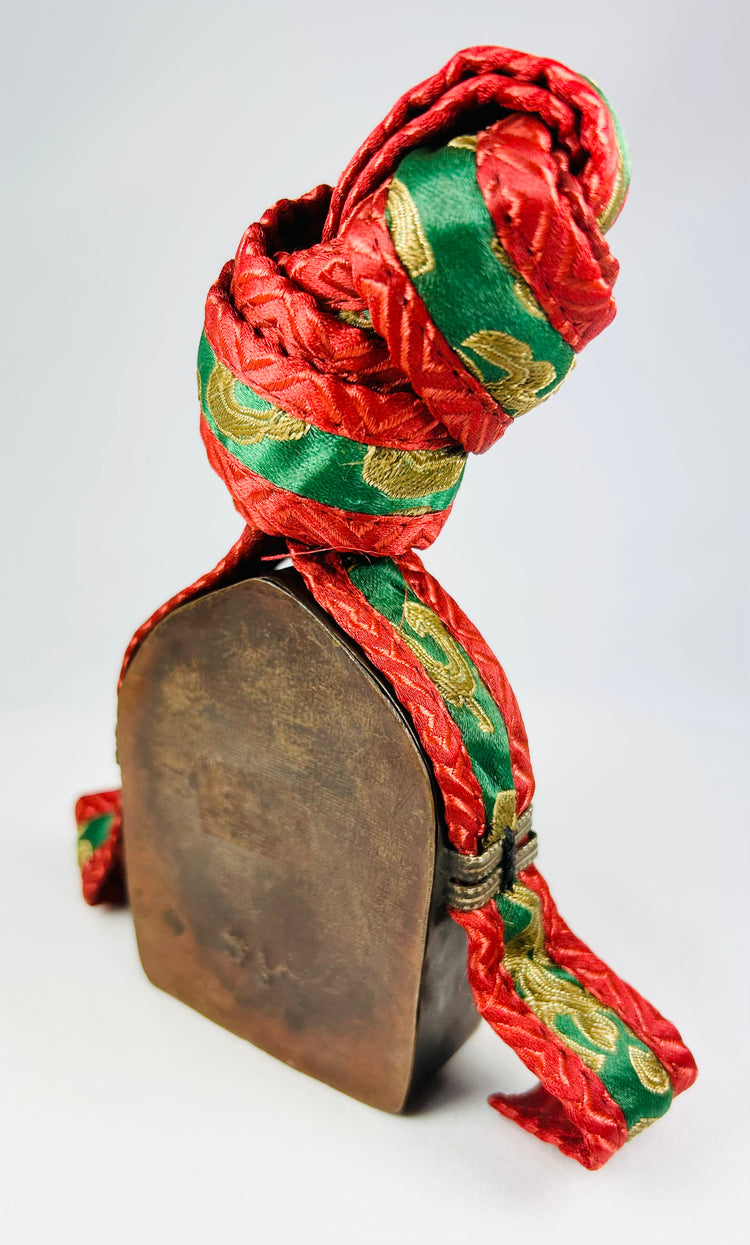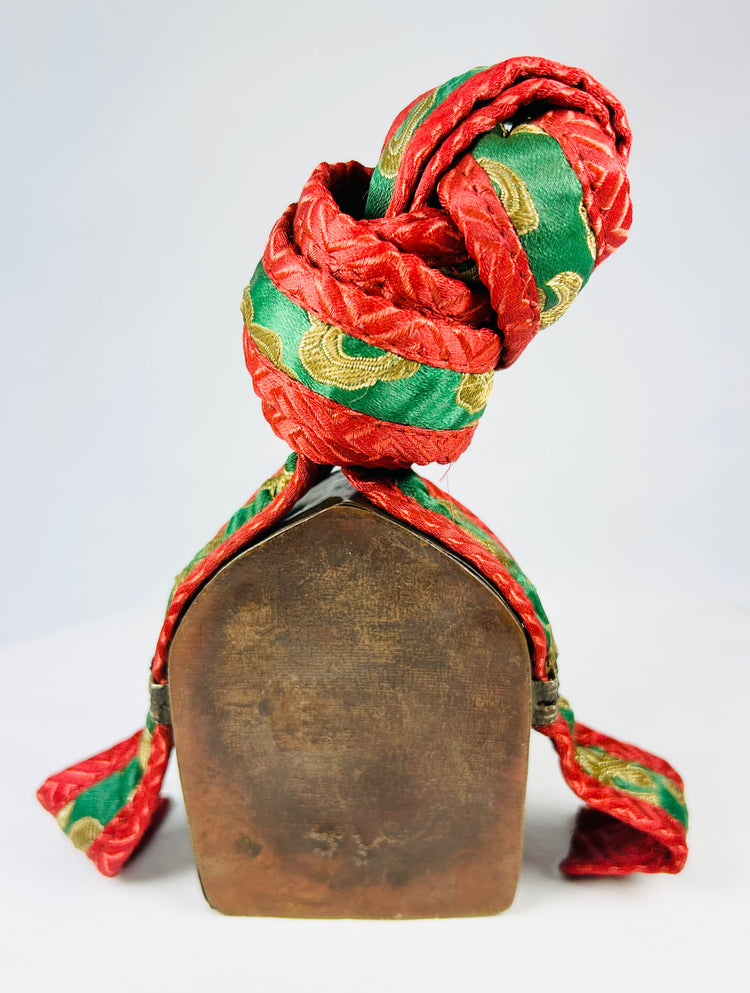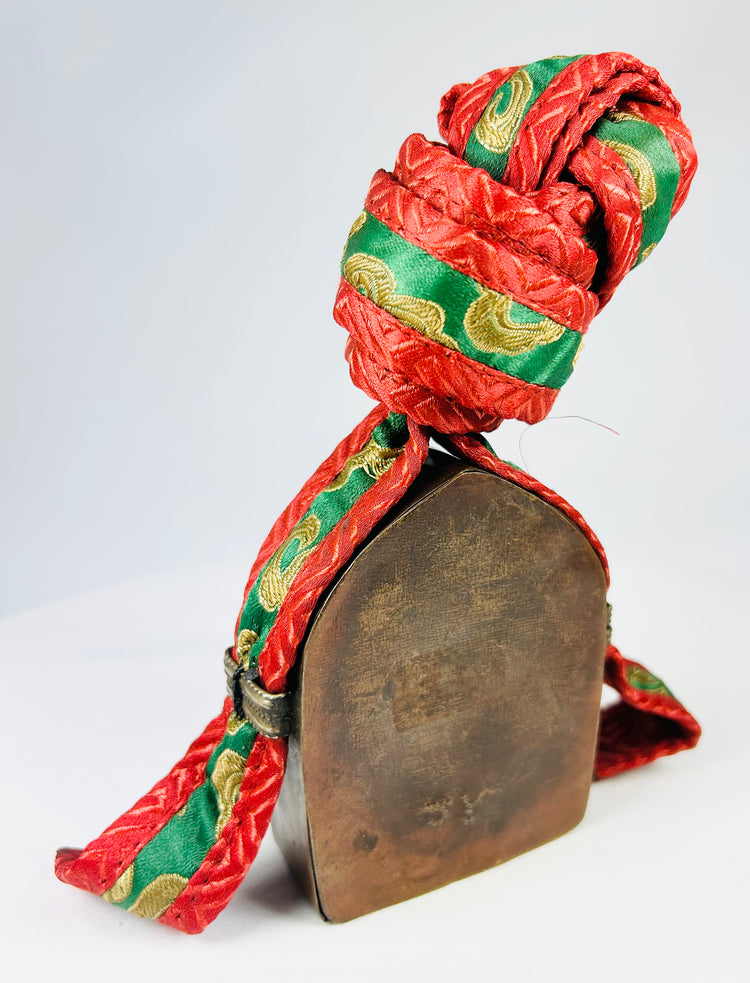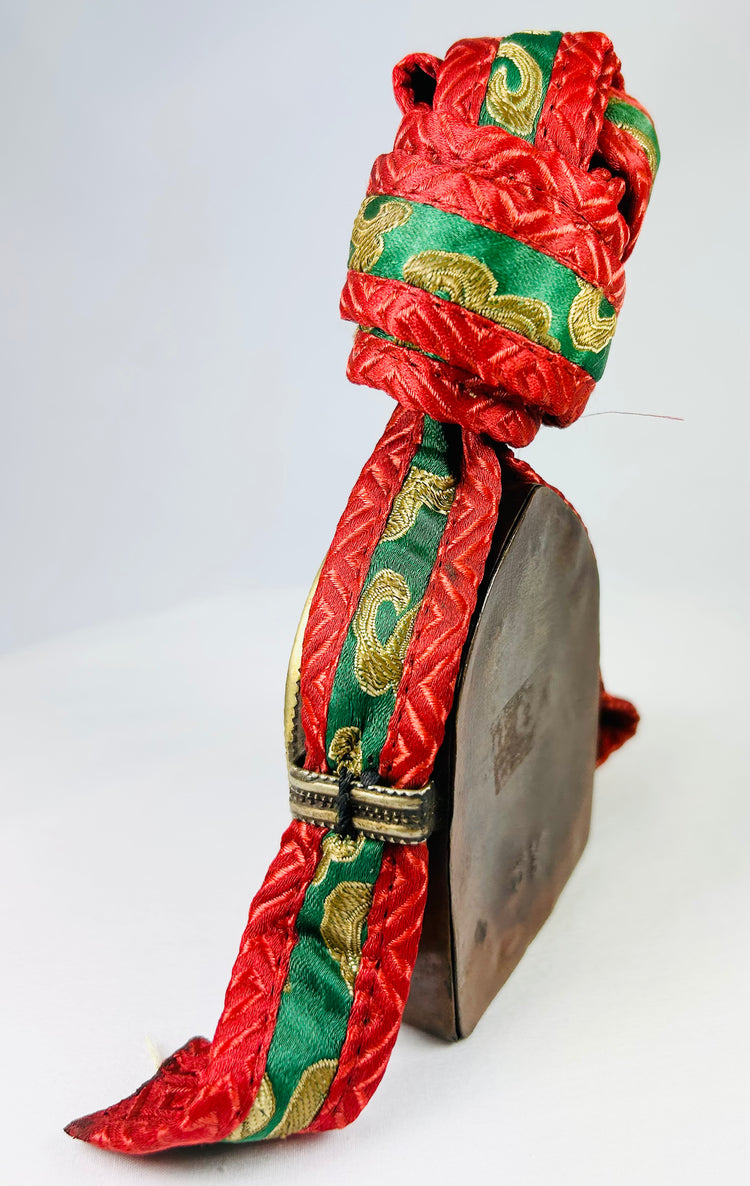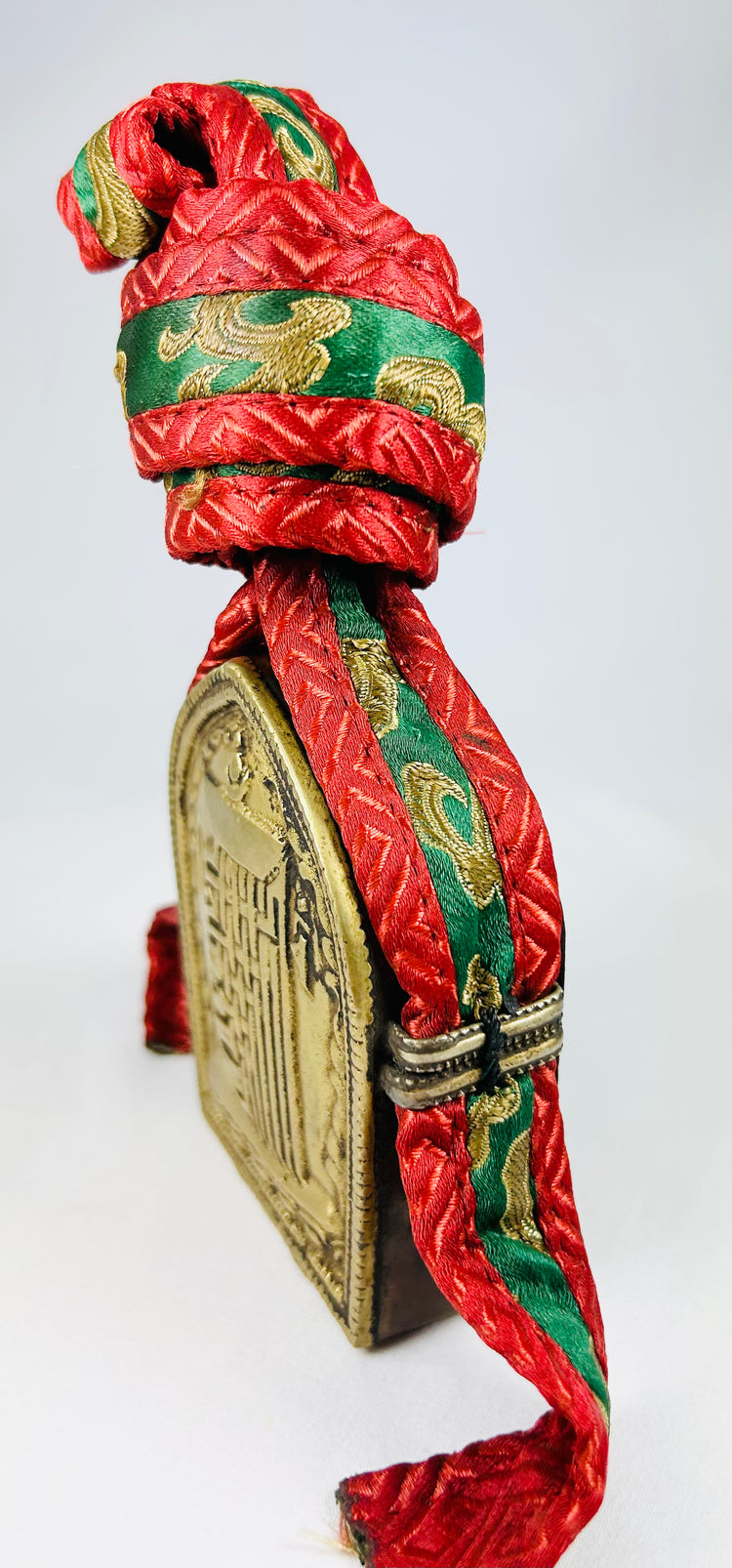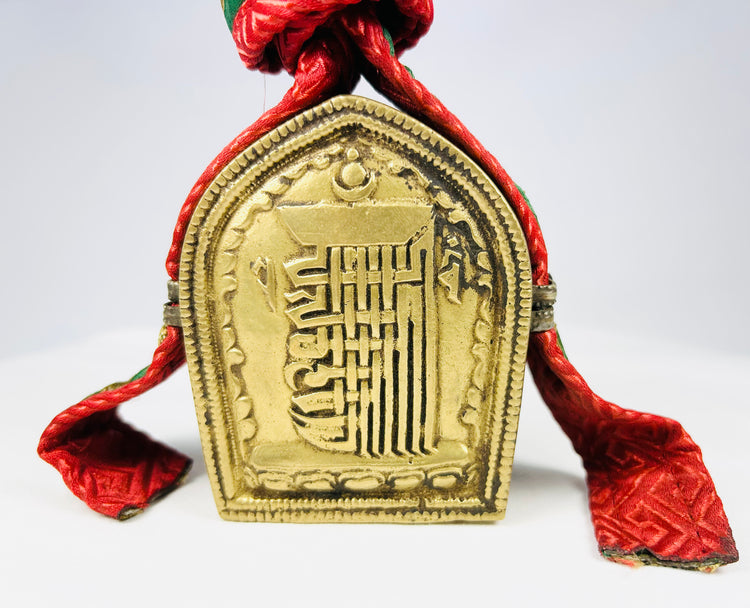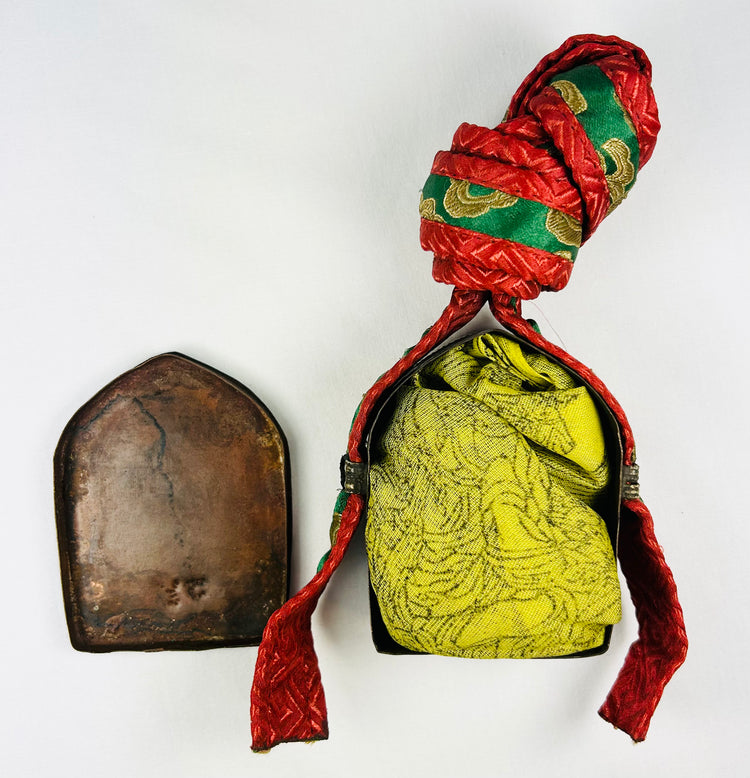Tibetan Gau Amulet Box with Original Embroidered Strap | 19th–20th Century
Description
More
Less
Historical Context & Origin
Region: Tibet / Himalayan Region
Material: Brass or bronze alloy with repoussé inscriptions; embroidered textile pouch with strap
Period: 19th to early 20th Century
Description
This traditional Tibetan gau (ghau) amulet box is presented in its original embroidered fabric pouch, complete with a colorful woven strap for suspension. The arched brass repoussé front is inscribed with vertical lines of sacred script, likely a Buddhist mantra such as Om Mani Padme Hum, framed by a beaded border. The reverse is undecorated and displays natural patina consistent with devotional use.
The textile cover, woven in red, green, and gold threads, forms a fitted pouch with flared corners and knotted strap, preserving the historic method of carrying such shrines on pilgrimages. Traditionally, the interior would hold relics, miniature scrolls, tsa-tsa clay tablets, or small images of protective deities.
Features
- Brass/bronze repoussé amulet box in arched shrine-shaped form
- Front panel decorated with incised/repoussé Buddhist script
- Original embroidered textile pouch in red and green with woven suspension strap
- Portable design intended to be worn close to the heart
- Patinated surfaces showing devotional wear
Cultural Significance
The gau shrine is a central element of Tibetan Buddhist practice, serving as both a protective talisman and a miniature portable altar. Carried on pilgrimages and daily journeys, it safeguarded prayers and relics. The survival of its original textile pouch is particularly significant, as many examples lose these fragile coverings over time. The pouch not only protects the shrine but also adds ornamental and symbolic value, reflecting the continuity of sacred practice.
Condition
Good devotional condition. Metal box with natural patina and minor wear; hinge intact and functional. Textile pouch well preserved with some fraying and fading due to age. Strap remains functional.
Dimensions (approximate)
Height: 4 in
Width: 3 in
Depth: 1.2 in
Age
19th–early 20th Century
Learn More
Description
Historical Context & Origin
Region: Tibet / Himalayan Region
Material: Brass or bronze alloy with repoussé inscriptions; embroidered textile pouch with strap
Period: 19th to early 20th Century
Description
This traditional Tibetan gau (ghau) amulet box is presented in its original embroidered fabric pouch, complete with a colorful woven strap for suspension. The arched brass repoussé front is inscribed with vertical lines of sacred script, likely a Buddhist mantra such as Om Mani Padme Hum, framed by a beaded border. The reverse is undecorated and displays natural patina consistent with devotional use.
The textile cover, woven in red, green, and gold threads, forms a fitted pouch with flared corners and knotted strap, preserving the historic method of carrying such shrines on pilgrimages. Traditionally, the interior would hold relics, miniature scrolls, tsa-tsa clay tablets, or small images of protective deities.
Features
- Brass/bronze repoussé amulet box in arched shrine-shaped form
- Front panel decorated with incised/repoussé Buddhist script
- Original embroidered textile pouch in red and green with woven suspension strap
- Portable design intended to be worn close to the heart
- Patinated surfaces showing devotional wear
Cultural Significance
The gau shrine is a central element of Tibetan Buddhist practice, serving as both a protective talisman and a miniature portable altar. Carried on pilgrimages and daily journeys, it safeguarded prayers and relics. The survival of its original textile pouch is particularly significant, as many examples lose these fragile coverings over time. The pouch not only protects the shrine but also adds ornamental and symbolic value, reflecting the continuity of sacred practice.
Condition
Good devotional condition. Metal box with natural patina and minor wear; hinge intact and functional. Textile pouch well preserved with some fraying and fading due to age. Strap remains functional.
Dimensions (approximate)
Height: 4 in
Width: 3 in
Depth: 1.2 in
Age
19th–early 20th Century
Learn More
You May Also Like




























